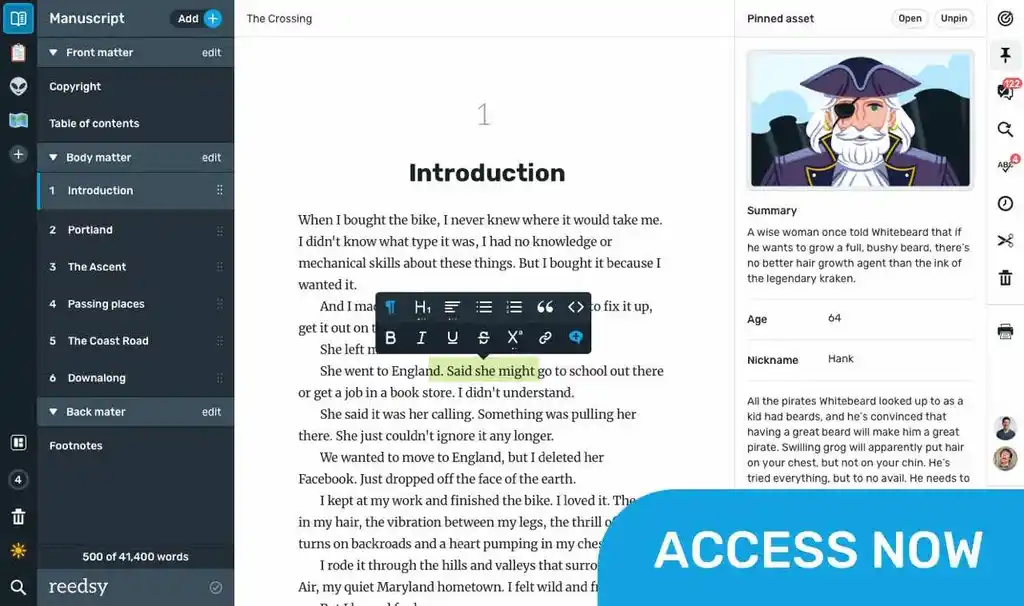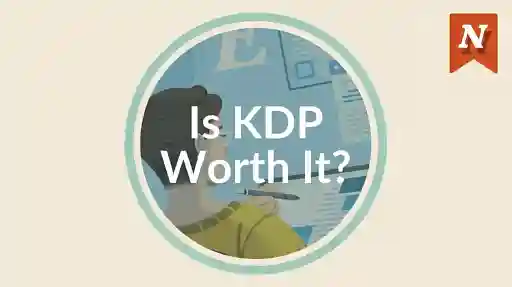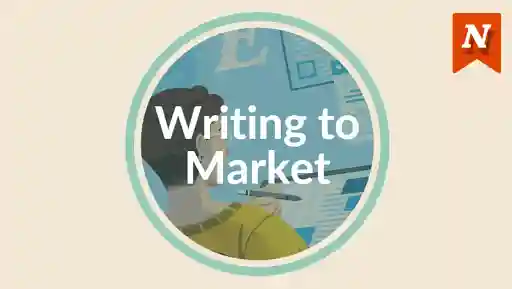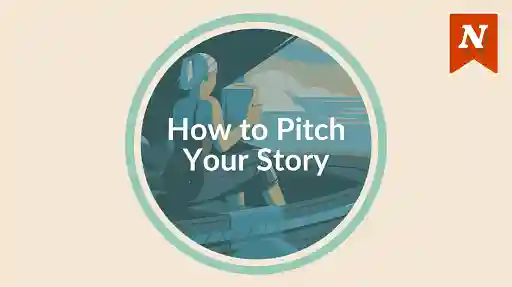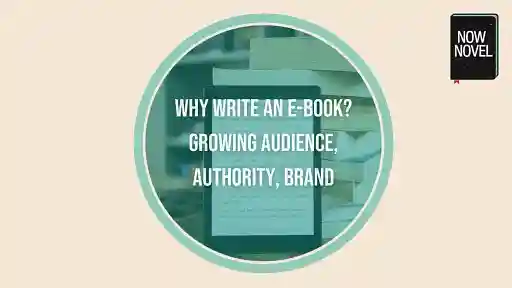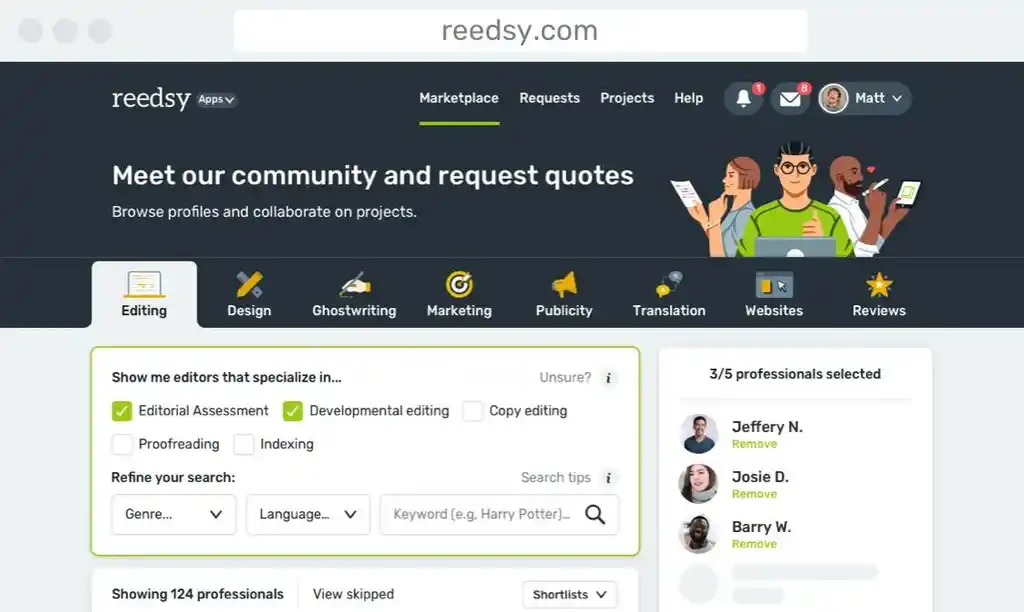So you’ve just self-published your book — that’s huge, and you should be proud! But now comes the part no one’s warned you about: selling it to readers and retailers. To help you out, we’ve compiled a few time-tested strategies that have been proven to work.
This article is divided into two parts:
I) Selling your book to individual readers online (tips 1-4); and
II) Selling your book to distributors, like in-person bookstores (tips 5-8).
For most self-published authors, the first part will be much more relevant. However, if your book has strong local/regional ties, or you’ve simply always dreamt of seeing it in bookstores, be sure to check out the second part, too. Regardless of your exact goals, read on for 8 effective ways to get your book in front of a wider audience.
1. Optimize your book’s product page
In a saturated market, most buyers are going to “judge your book by its cover” — both by its literal cover and its overall presentation, i.e. your book’s product page. On the bright side, this means you can set yourself up for success by giving a great first impression!
To that end, treat your book’s listing on Amazon and other online retailers like a sales pitch. Make sure you have a professional and genre-indicative cover, a well-written book description, and an enticing “Look Inside” preview that will make people want to read more.
For inspiration, identify some books that are selling well in your genre and take a close look at their online listings. Find your genre (or subgenre — the more specific you can be, the better!) on Amazon and review its bestsellers. If you can find successful competitor titles that are also self-published, like yours, that’s a bonus; see how their pages stand out from their traditionally published counterparts, and consider how you can do the same.
As an example, let’s look at an Amazon product page for a bestselling book that includes all of these elements without looking too busy:
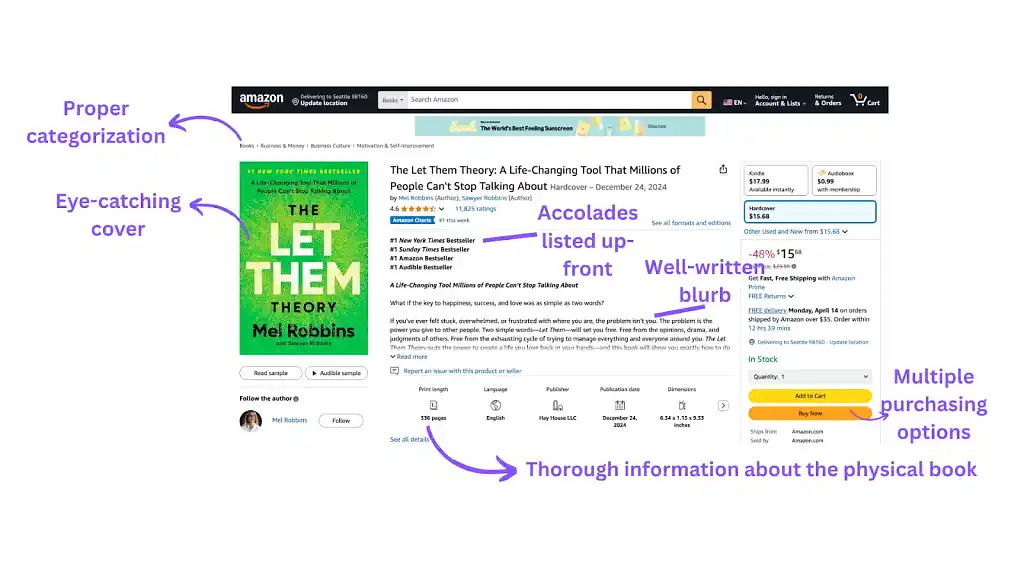
On the more technical side, you also want to ensure your product page has the right keywords, categories, and clear genre signals. Once again, you can look at your competitors to see what they’ve selected under “Product details”, and emulate as necessary. And if you want to get really technical, consider A/B testing different blurbs to see what draws readers in.
2. Get reviews — early and often
Securing reviews for your book is one of the best ways to demonstrate that your work is reputable and worth reading. Fortunately, there are plenty of free and paid ways to get reviews from both professional critics and “ordinary” readers.
Depending on your budget and timeline, you can plan to obtain reviews either before publication or very shortly after… but whichever you choose, don’t delay! You’ll want to publish those early reviews alongside the first edition of your book, so readers can immediately see social proof that it’s a good investment.
Holding ARC giveaways — and getting those early readers to review your book — is a great way to build excitement. Readers can also review your book on platforms like Goodreads, Storygraph, and StoryOrigin; indeed, you should encourage them to cross-post their (positive!) reviews to various sites.
Also, if you have the means to pay for a professional review, try using a reputable paid review service like Kirkus, or submit your book to the vetted reviewers on Reedsy Discovery. Getting your book reviewed via multiple forums is sure to increase your visibility and boost sales.
Pro tip: On Amazon and similar platforms like Google Play Books, reviews can be removed if the reviewer knows you personally. So while you can ask friends and family for help with this, be very cautious about having them post their reviews on these retail/distribution platforms. (Pure review sites like Goodreads are fair game for anyone, though!)
3. Build a strong author platform
If you want to attract people who will buy your book, post positive reviews about it, and continue to invest in your work as an author, you must build a strong online author platform.
This can be a professional author website, regularly updated socials, a strong author newsletter — or something else entirely! Get creative with resources and platforms you can to build relationships with your readers and anticipation for your book. Here’s an author website we love:
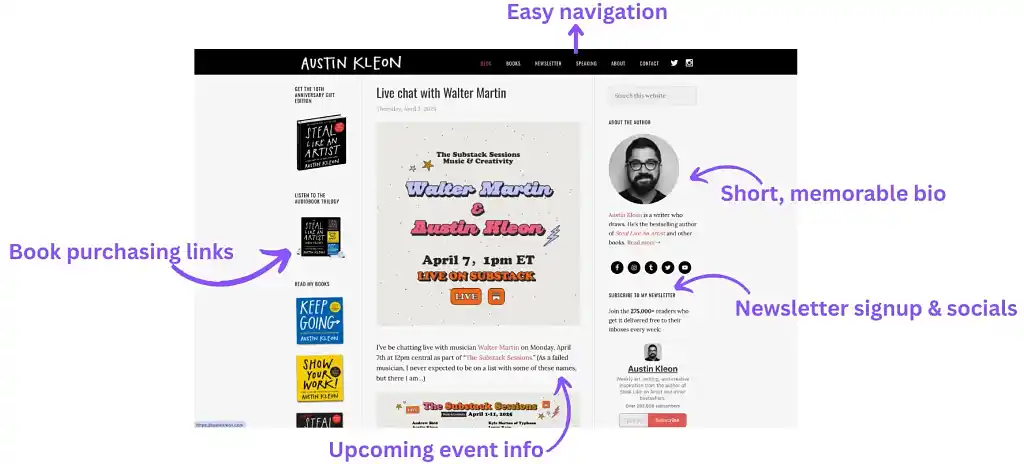
That said, while you might feel pressure to blow up overnight, don’t try to do everything at once. Instead, identify the one or two social platforms where most of your audience is “hanging out,” and make a concerted effort to release consistent, high-quality content on there.
Once you’re feeling confident about your online presence, consider collaborating with other authors as well — this will allow you to reach an even broader audience!
You can do social media cross-promotions and 2-for-1 giveaways, write for each others’ blogs or newsletters, or even host an online event together. All this will bring more readers to your book and further cement you in your genre’s online community.
4. Be strategic about paid promotion
Depending on your budget, it can also be a good idea to partner with a book promotion service, or use paid ads to get your book in front of people who might not otherwise hear about it.
To get the most bang for your buck, try to be strategic:
- Use reputable book promotion services if you decide to go that route; or
- Partner with a professional book marketer who can determine where your budget will be most useful.
If you do decide to pay for ads, pay attention to how they’re working. If you aren’t seeing sales, don’t pay for more clicks! It’s not enough to just get more people viewing your product page; on-page conversion is key. (Of course, if you’re struggling with this, you may also wish to review your product page itself — make sure it’s actually appealing to users who land on it.)
And if you don’t want to invest in paid advertising, you can also promote your book by offering a discount, releasing a chapter or two for free, or giving away a few free copies. All these are budget-friendly ways to build excitement around your book and engage potential new readers.
Next up: four more tips pertaining to selling physical copies of your book. Let’s go!
5. Create a professional-looking physical product
Like an online sales page, the appearance of your physical book makes a powerful first impression. To ensure it draws readers in, you’ll first need to get a professional cover design. This applies to online sales too, of course, but here you’ll also need to consider the physicality of the cover: how the colors, textures, and fonts will look in real life, not just on Amazon.
Here’s some gorgeous cover inspiration to get you started:
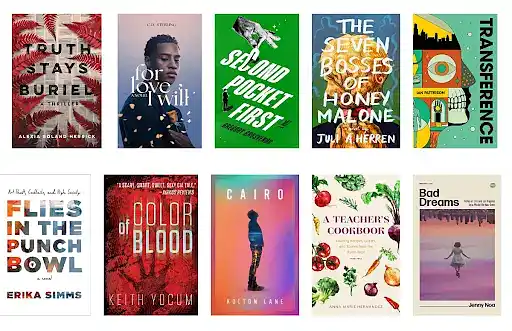
Each of these covers effectively conveys the book’s genre and overall contents, without giving too much away — in other words, engaging readers at just the right level.
You’ll then need to print professional-grade copies of your book with a service like Blurb or IngramSpark. In person, the overall print quality (evenly cut pages, normal margins, no ink bleed, etc.) is just as important as an enticing cover. If potential readers flip through your book and see messy text or haphazard line spacing, they might assume that the writing isn’t carefully constructed, either.
It’s also important to include an ISBN, a barcode, and pricing information on the back cover, and make sure your book’s internal formatting is bookstore-quality.
If all this sounds like a lot of work, consider hiring a professional designer to get your book in tip-top shape — the upfront cost will be higher, but you’ll likely make it up with better sales.
6. Forge relationships with local booksellers
Make a good first impression on your local bookseller by visiting with a one-sheet: a printout that includes information about your book, wholesale and individual pricing, and your return policy. To increase your likelihood of selling the book here, offer a competitive wholesale discount — 40-55% off is typical for debut and indie authors.
Alternatively, you could give the bookstore a few copies of your book for free — rather than having them buy it wholesale up front — and strike a deal where you’ll take a certain percentage of any sales they make (this may work even better with non-bookstore retailers, which we’ll discuss in the final tip).
Even if you haven’t published your book yet, you can always start this process early by visiting local bookstores, establishing yourself as a customer, and building relationships with the booksellers who work there. This will also help you get a sense of what kinds of books each store tends to keep in stock and how often they take on self-published books.
7. Organize in-person events

When you go into a local bookstore, don’t just pitch what to put on the shelves. Pitch events for how to fill up the room!
Offer to do book signings, readings, workshops, or local author nights — events that’ll bring more people into the bookstore, increasing its overall business and potential sales of your book.
Reach out to authors in your area about partnering for certain events; again, even if you haven’t published anything yet, or if you’re between books, this can still be valuable. You can use these events to network and build relationships with booksellers, which will make it easier for you to sell your book to them when the time comes.
When preparing for an author event, set yourself up to find long-term readers by bringing fliers and posters with your social media and website information. Better yet, bring something your audience can take home — well-designed bookmarks, stickers, postcards, etc.
You might be able to use the same printing service to create these as you did to print your book. Have a look at different printing options to see what they offer, such as tie-in discounts for “merch” items to be delivered alongside your main order.
8. Think beyond bookstores
In addition to local bookstores, you’ll also want to pitch your book to other local businesses or community hubs: gift shops, libraries, schools, and cafés, for example. Any of these might buy a few copies from you — especially if your book has a bit of local color.
If your book doesn’t have much relevance to your local community, target venues that align with the book’s theme. For instance, if you’ve written a cookbook, you might be able to sell it to local restaurants or bakeries. If you’ve written a wellness book, your local yoga studio might be interested in purchasing it.
You should also think seasonally: holiday markets, craft fairs, and annual community events are all great opportunities for you as a local author!
These tips have helped countless authors sell their books, in-person and online — but take it one step at a time. If you try to do everything at once, you’ll get overwhelmed and struggle to give any individual strategy the full attention it deserves.
Instead, start with just 1-2 actions that fit your precise strengths, goals, and resources. Remember, marketing is a long game; your goal should be to build a loyal base of customers for your writing, one book at a time. If you can get yourself on this path, you’ll be well on your way to the bestseller list!
